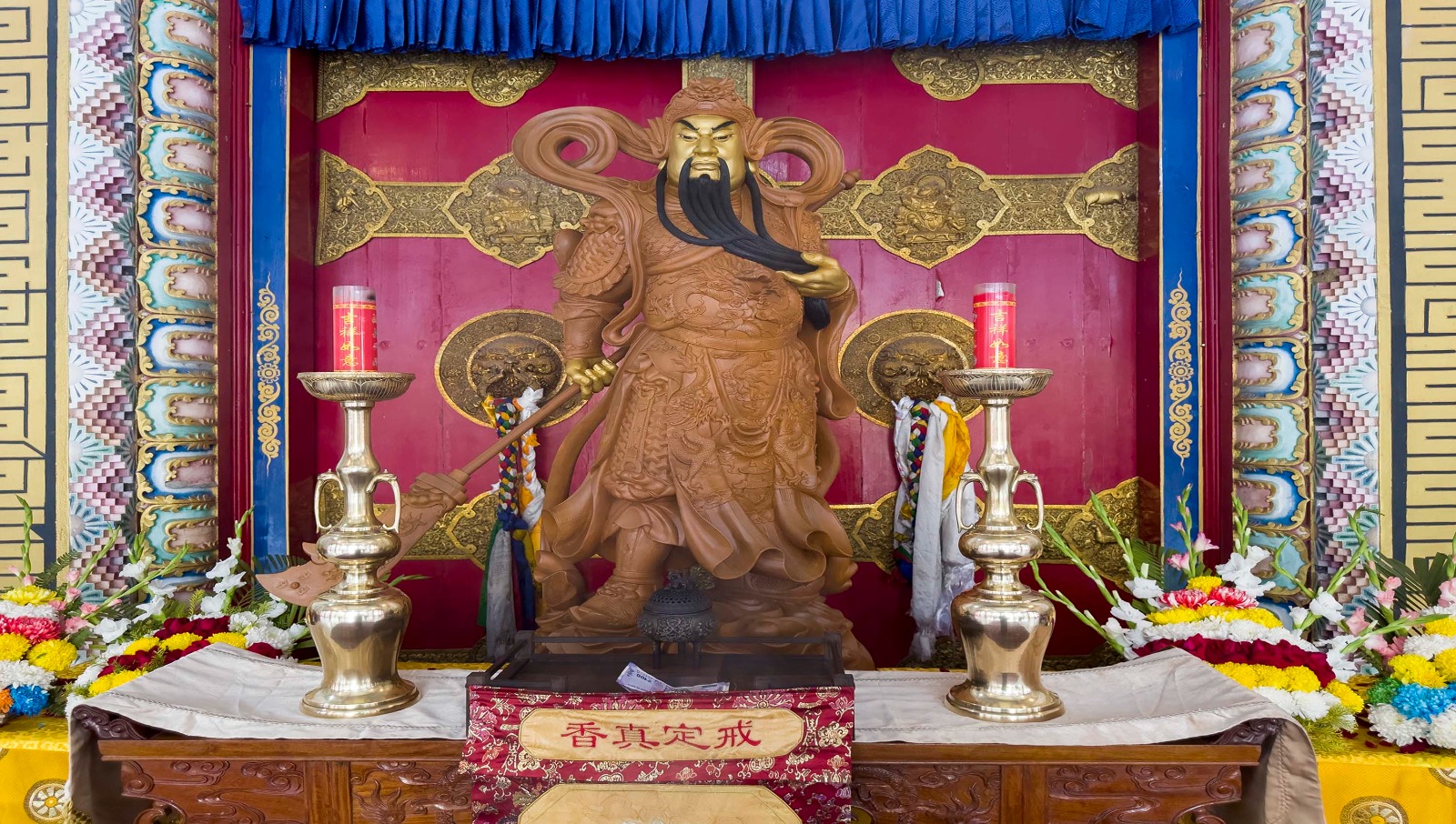Tergar Shrine Hall
11 February 2024
At 4.00pm on the second day of Losar, a group of thirty nuns from Palmo Drubdey Chӧkyi Dingkhang, Khenpo Tsultrim Gyamtso’s nunnery in Bhutan, gathered on the veranda outside Tergar Shrine Hall to sing the ritual for the protector Sangharāma. The Secretary of Tsurphu Labrang Office, Karma Gyaltsen Sonam, also took part, while other representatives from Tsurphu Labrang watched.
The 17th Gyalwang Karmapa has worked steadily to preserve and revive Karma Kamtsang rituals. This was one of the Losar practices at Tsurphu Monastery, the seat of the Karmapas in Tibet. However, when the 16th Karmapa, Rangjung Rigpe Dorje, escaped from Tibet in 1959, the original text of this ritual was lost and the continuity of the practice was broken. The 17th Karmapa compiled a new ritual to replace the one that had been lost. His Holiness also composed all the melodies for the ritual as well as the accompaniment with cymbals, bells and drum.
An elaborate form of this ritual, in Tibetan and Chinese, was performed at the. Kagyu Monlam in March 2017. [https://kagyumonlam.org/index.php/en/component/content/article/the-sangharama-ritual?catid=20&highlight=WyJzYW5naGFyYW1hIl0=&Itemid=111]
Sangharāma was originally a famous Chinese general called Guan Yu or Guan Gong. He had admirable qualities such as courage and integrity, but as a general he caused much death and suffering. Consequently, when he died, he became a ghost, haunting Jade Spring Mountain, near modern-day Beijing. However, after he had been converted to Buddhism, he changed into a dharma protector, and was given the new name Sangharāma.
The connection between Sangharāma and the Karmapas began when the emperor Yung Lo of the Ming Dynasty, wanting to learn more about the Buddhadharma, invited the Fifth Karmapa Deshin Shekpa to China. Sangharāma also heard the Karmapa’s teachings and witnessed various miracles; he was so impressed that he followed Deshin Shekpa back to Tsurphu in Tibet. Once there, he was given a new home on a mountain behind Tsurphu Monastery. This mountain became known as “the mountain of the Chinese deity,” and Sangharāma became one of the protectors of Tsurphu Monastery. Sometime later, the Karmapas began the tradition of offering a practice for the Sangharāma protector during the Losar festival.
As Sangharāma is a mundane protector, the ritual cannot be performed in a sacred space so it is performed outside. This was the custom at Tsurphu Monastery, and it continues now at Tergar, where the ritual took place on the veranda in front of the shrine hall. A statue of Sangharama stood on an altar stationed at the main entrance to the shrine hall and the nuns stood to either side, dressed in full ceremonial costume: yellow prayer shawls; white leather and brocade boots; vests with a brocade inlay; and chabshu—the rectangular, brocade pouches which dangle from the waist and are a traditional part of ceremonial dress.In perfect harmony they sang the melodies of the ritual to the steady beat of the Chinese drum, punctuated by the clash of cymbals, and the ringing of a handbell.
In the final section of the puja, multiple Chinese firecrackers exploded abruptly, startling many of the on-lookers. This was for auspiciousness!


















